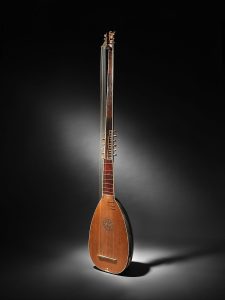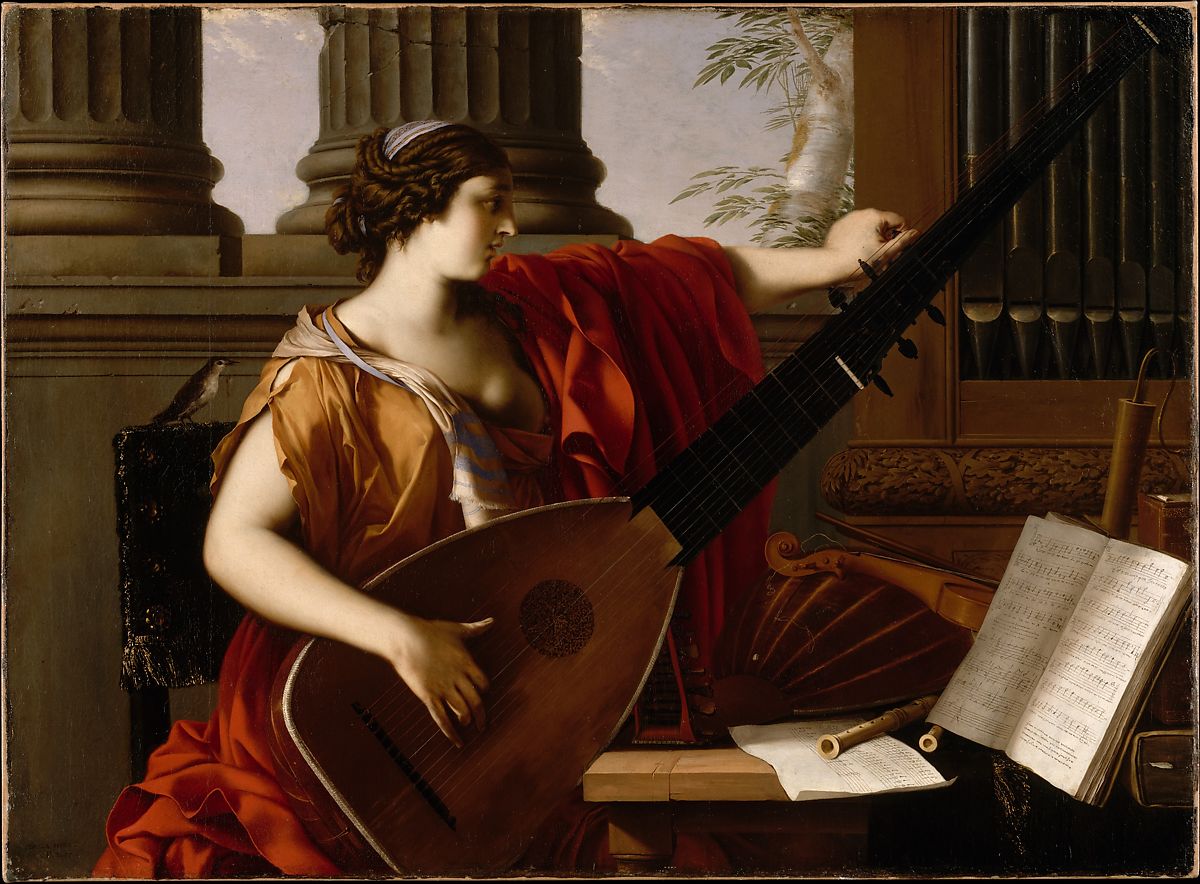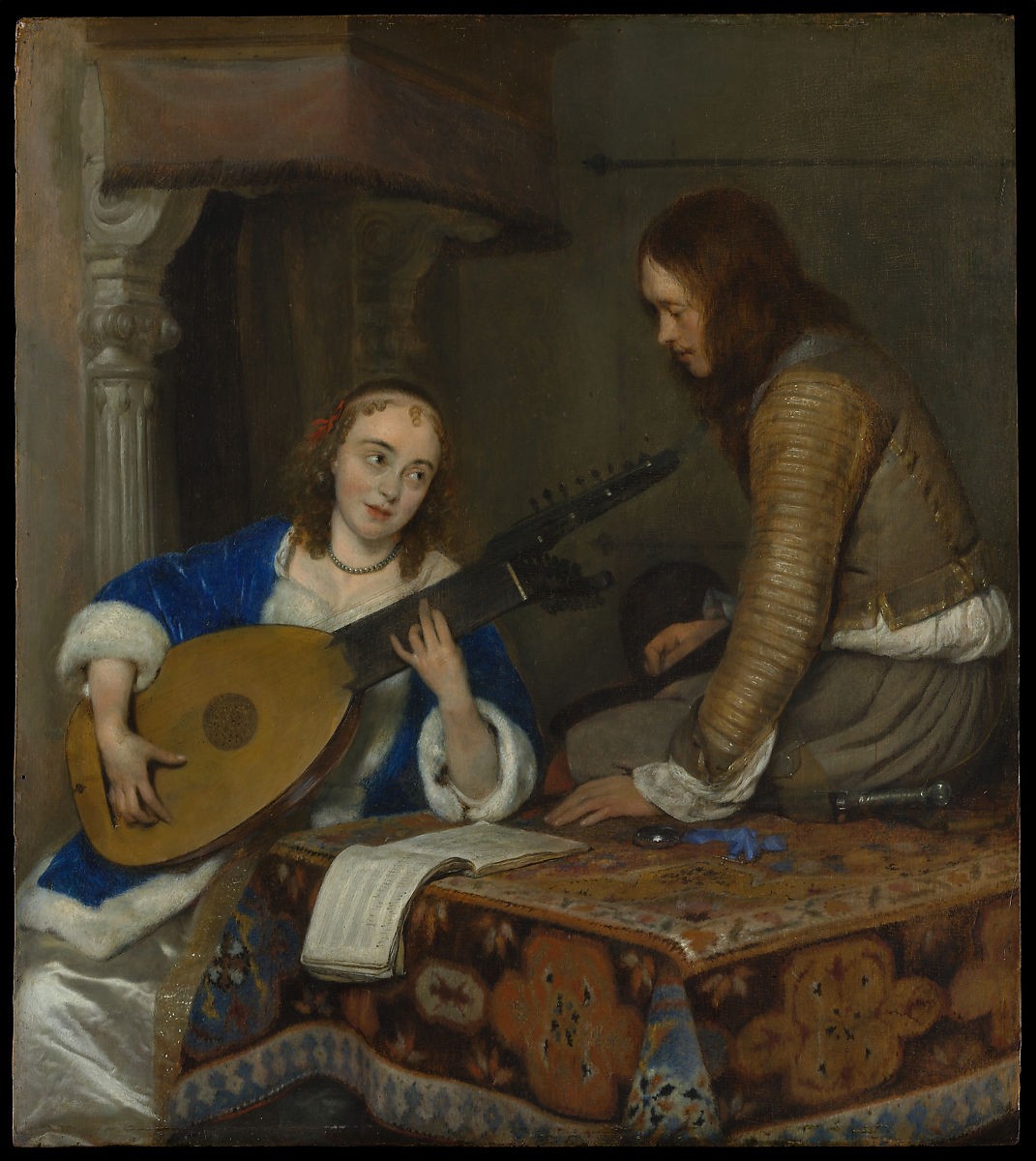You’ve been to early music concerts and noticed a rounded back instrument being strummed or plucked, reminiscent of William Shakespeare and harking back to the sounds of John Dowland – the lute. But do you know much about this instrument?
Recently I was doing a little research and came across this essay written by Jonathan Santa Maria Bouquet, an instrument builder and based out of Edinburgh University. Read on…
The origin of the lute (It.: leùto, liuto; Gr.: laute; Sp.: laúd; Fr.: luth) cannot be pinpointed to a specific date, but its close relationship to the Arab ‘ud is without doubt. The ‘ud has a pear-shaped body with a bowled back, made of numerous ribs (thin strips of wood), a wooden soundboard, rosettes (decorative soundholes), plucked gut strings, and a peghead that is bent back in a curved shape (1982.143.1).
The name al ‘ud literally means “the wood,” and was most likely used to distinguish instruments with wooden soundboards from those with soundboards made of animal skin. Examples of ‘uds first appear on illustrations and manuscripts in the pre-Islamic Arabic peninsula in the sixth century.
The earliest evidence of the Arab ‘ud in Europe can be found in numerous carvings and depictions dating back to the ninth century, when it was introduced by the Moors to Spain. However, it is not until the thirteenth century that the Western lute can be distinguished from the Arab ‘ud in iconography. One of the first depictions of the European lute—an illustration of a musician playing the instrument at a chess game—can be found in the Libro de Juegos (Book of Games) commissioned by Alfonso X in 1283. This illustration demonstrates the similarity of the form of the European lute with that of the ‘ud, although the latter has frets and its peghead is bent back like a lute (not curved as on a typical ‘ud). The instrument is shown being played by a Christian woman, whereas all previous depictions of similar instruments were played by Arab performers.
Since its first appearance in Europe, the lute has undergone continuous modifications to keep up with developments in music. Most of these modifications are specifically related to the number and length of the strings or courses (pairs of gut strings meant to be played together), changing from four in the Middle Ages to thirteen in the late Baroque. Although no lutes made in the Middle Ages survive, their characteristics and development can be deduced from the numerous depictions and descriptions found in period literature, where the lute is often mentioned.
Most fourteenth-century depictions illustrate lutes with only four courses, played with a plectrum (a device used to pluck strings), one or two rosettes, moveable gut frets tied to a relatively long neck, and a bent-back pegbox. The earliest known nonliterary European source in which the lute is mentioned dates from 1372. It is a legal document regarding an agreement between professors and their earnings for teaching lute, citara, and other instruments. Thanks to this document, one can surmise the existence of a lute school as early as the fourteenth century in Europe (see Rebuffa 2010).
In the fifteenth century, lutes with a fifth course appear in iconography coexisting with instruments with four courses. The main musical function of these lutes was to accompany vocal music. With the rise of polyphony during the Renaissance, a sixth course was added to the lute. The Renaissance lute typically had a body constructed of nine to thirteen ribs, mostly made of maple, and a single carved rosette (with an intricate geometric design—most of the examples show a “knot” or star pattern; see Rizzi 1984). At this time, lute players began to use their fingers, instead of a plectrum, to pluck the strings, allowing for multiple voices on the same instrument. This innovative polyphonic music generated the creation of pieces written for groups or ensembles of instruments of the same “family” but of different sizes.
During the second half of the sixteenth century, the lute-making capital of Europe was Füssen, a small village situated in Bavaria, Germany. The profusion of lute-making workshops in this area was so expansive that it was necessary to create a guild for lute makers to regulate and organize their activities, production standards, and prices (see Smith 2002). The guild set the maximum number of workshops in Füssen at twenty, a regulation that had major consequences in the history of the lute. It triggered the emigration of numerous lute makers, first to the surrounding area in Bavaria, then to Venice, through the Via Claudia Augusta (an important ancient Roman road connecting the valley of the Po River with Austria across the Alps), and finally to Bologna and Padua, which together became the most important centers for lute making in the seventeenth and eighteenth centuries. It is important to observe that by this time almost every master lute maker was originally from Bavaria.
A very fine example of the work of that time and region is a lute made by Sixtus Rauchwolff in 1596 (89.2.157)

Title: Lute
Maker: Sixtus Rauchwolff (German, Augsburg 1556?–after 1629)
Date: 1596
This instrument has been modified in multiple stages of its life, yet the outstanding craftsmanship of its manufacture is still evident.
By the end of the sixteenth century, seven-course lutes became popular while lutes with eight and ten courses became more common. Thanks to the trade between Venice and Africa, exotic materials such as ebony, ivory, snake wood, and rosewood were favored materials in lute construction. During this time, the Tieffenbrucker family (one of the most important families dedicated to the craft of lute making in Venice) developed a new method to build lutes using a very large number of ribs (more than thirty), often made of yew wood instead of maple. After this, yew became one of the most highly appreciated materials among lute makers (1989.13).
Lutes continued to evolved at the end of the Renaissance and into the Baroque period. Music demanded additional low notes from the lute in order to play thorough bass. The new function of the lute as a continuo instrument prompted the need for longer bass strings, generating a number of experimental lutes. First to appear, without success, were instruments with small necks and enormous bodies; shortly after, lute makers built instruments with extensions on the neck and/or pegbox. This led to a variety of additions to the lute family, including archlutes (1988.87), double-headed lutes (14.40.617), and theorbos (50.189).
- Title: Allegory of Music Artist: Laurent de La Hyre (French, Paris 1606–1656 Paris) Date: 1649
- Title: A Woman Playing the Theorbo-Lute and a Cavalier Artist: Gerard ter Borch the Younger (Dutch, Zwolle 1617–1681 Deventer) Date: ca. 1658
- Title: Lute Maker: Sixtus Rauchwolff (German, Augsburg 1556?–after 1629) Date: 1596
Silver wound strings, invented around the 1660s, enabled lutes to reach deeper and stronger bass notes with shorter strings. These strings with new technology replaced the lower gut strings and put an end to the ever increasing length of the lute.
At the end of the seventeenth century, in France, the lute regained popularity as an instrument ideal to accompany vocal music as well as a soloist in court performances. This spurred a new series of modifications, including a completely new way of tuning the strings, and the addition of an eleventh course.
In the first decades of the eighteenth century, lute music was revolutionized in Germany by lute player and composer Silvius Leopold Weiss. His musical ideas made it necessary to extend the number of strings, giving birth to the thirteen-course lute. To meet these new standards, most of the old instruments were modified by changing the bridge and adding small protruding extensions, called “riders,” to the pegbox. Another type of thirteen–course instrument, the swan-neck lute, developed simultaneously; it utilized an extended pegbox, often of a swooping shape, to accommodate additional bass strings (2008.3).
As lutes continued to acquire supplementary strings, they became more difficult to tune and maintain. These hindrances, along with the rising popularity of violins and keyboards, pushed the lute almost to extinction. As the popularity of the Baroque lute waned, a simpler version with only six or seven strings or courses, known as the mandora, became popular in Germany (89.4.3140).
photography by mma
The second half of the eighteenth century saw the decay of the lute. An important number of old lutes were transformed into guitars by narrowing the neck, adding metal or bone fixed frets, and replacing the bridge and pegbox to allow only six single strings. Some instruments of this type were also made in France at the turn of the nineteenth century. However, these hybrid lute-guitars stopped being played soon after that, and the lute finally fell into oblivion.
The lute saw a resurgence in popularity with the early music movement of the late twentieth century. Today, lute players and makers approach the lute and its music from an academic standpoint, and lute making is a cottage industry throughout the world.




